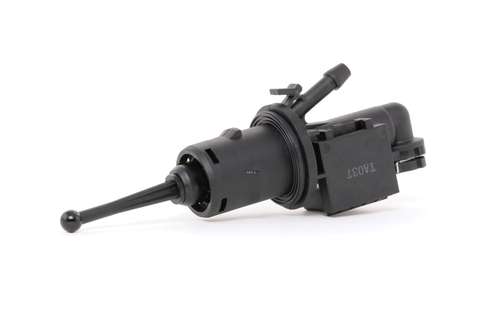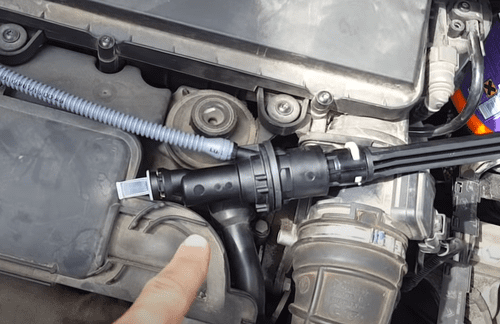
How to recognize symptoms of HS transmission-driven clutch?
Content
A sensor-follower clutch pair is a set of two parts that form a hydraulic system designed to pressurize the clutch release bearing for actuation. When it is HS, the clutch-sender is showing symptoms such as soft clutch pedal or gear shifting problems.
⚠️ What are the symptoms of HS transmission-slave clutch?

Thetransmitter и clutch slave cylinder they are actually two different parts, but they make up the same mechanism and therefore make up a single whole. Their role is to transfer the pressure exerted by the driver on the clutch pedal to the clutch.
When you push it down, you start by activating the clutch slave cylinder, the pusher of which drives the sensor piston to close the hole through which the brake fluid flows. Thus, the system creates pressure in hydraulic circuit.
The contact force is transmitted to clutch forkwhich activates the stop. This activates the rest of the clutch kit, allowing you to change gears and start the vehicle.
Good to know : Sometimes the system does not work with this hydraulic device, but with the clutch cable that connects the pedal to the fork. Hence, there is no clutch transmitter and receiver.
In fact, neither the transmitter nor the clutch slave cylinder are wear parts. However, they are part of the hydraulic system and can therefore leak. Since the clutch sensor and the slave cylinder form the same block, they are replaced at the same time.
If the clutch master or slave cylinder fails, you will experience the following symptoms:
- La clutch pedal soft and sinks too easily;
- On the contrary, clutch pedal too stiff ;
- you trying to change gears ;
- You notice liquid stream at the cup or gasket of the clutch sensor or slave cylinder.
These symptoms tell you that there is a malfunction in the transmitter-slave hydraulic system of the clutch, which can no longer pressurize the device. Therefore, your clutch will react badly. Then your clutch pedal and gear shift will behave unusually.
👨🔧 How can I eliminate the symptoms of a faulty HS transmitter-slave clutch?

The main problem that a master-slave clutch system can face is hydraulic leak... If it is just a gasket, cup or hose, it is possible to replace only those parts. However, it is better to replace the entire system.
The clutch sensor and the slave cylinder are replaced at the same time if one of them is out of order. It is also necessary to change all seals. However, to do this, you must start with bleed clutch slave-sender, which is achieved due to the pumped screw located on the clutch slave cylinder.
There is no need to change the clutch kit if you are replacing the HS clutch transmitter / receiver.
🔧 When should you change the sender-receiver of the clutch?

The clutch master / slave unit does not wear out. Unlike clutch kit which needs to be changed every 160 kilometers roughly, a clutch sensor and slave cylinder sometimes serve the life of your vehicle.
However, they need to be replaced. in case of leak on the hydraulic system. Indeed, the leak prevents the system from reaching the pressure required for proper clutch engagement. You will experience symptoms such as the clutch pedal sagging.
Expedient change transmitter and receiver at the same time clutch if one of them is out of order. This change is accompanied by a replacement of the seals and must begin with bleeding the hydraulic circuit. Count around 150 € to replace the HS clutch sensor or slave cylinder.
Now you know all the symptoms of the sender-receiver of the HS clutch! If you come across one of them, go through our garage comparator. We will help you find a garage at the best price to replace the sender-receiver of the clutch!
